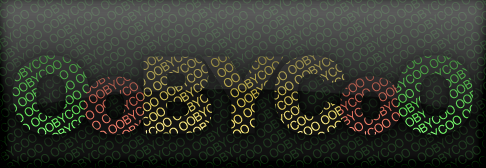Thanks for uploading the split .rar form to 4shared. It downloaded fine for me. I never did open the .isz file.
First, congratulations. This is a good collection. I am most familiar with the Hive/Rhodium collections so that's where I looked most closely; Shroomery and whatnot I'm not so familiar with.
There are some duplicate files in this collection, but many of the dupes it makes sense to keep because they're referenced from different contexts. There are other duplicates that can just be dropped and will save some space, but not many. Only about a dozen I found.
I never ran any of the Java code or Windows executables included in this archive. I don't know if leaving the security tools included is a good idea. Anyone cautious enough to use computer security tools probably doesn't want to use computer security tools provided by a stranger as part of a giant drug archive.
Another relatively minor issue: you have a few hundred megabytes of books that are stored in .rar and .zip files (mostly rar) inside the .iso. Compressing each of those books separately may reduce the single file's size slightly but it will slightly hurt the compression ratio for the whole .iso, because the compressor you use on the .iso then can't effectively combine contexts across the different books. The other problem is it's a minor annoyance to open the .rar and then open the book inside instead of opening the book directly.
I ran into path problems in some of the HTML files, including top level indexes. The URL path separator is always /, forward slash. The back slash character, \, will work only by coincidence, and only on Windows. I tried browsing it on Linux and a lot of links were broken for me. I don't know if you did that yourself or if the parts of the archive already came that way, but it should be fixed. I can fix it up myself if necessary.
I am going to cross-check the Rhodium files in more detail later. I think I have a few (but not a lot) files that were missed. I can provide copies of the extra files to integrate, assuming that our mysterious archivist can visit this forum.
First, congratulations. This is a good collection. I am most familiar with the Hive/Rhodium collections so that's where I looked most closely; Shroomery and whatnot I'm not so familiar with.
There are some duplicate files in this collection, but many of the dupes it makes sense to keep because they're referenced from different contexts. There are other duplicates that can just be dropped and will save some space, but not many. Only about a dozen I found.
I never ran any of the Java code or Windows executables included in this archive. I don't know if leaving the security tools included is a good idea. Anyone cautious enough to use computer security tools probably doesn't want to use computer security tools provided by a stranger as part of a giant drug archive.
Another relatively minor issue: you have a few hundred megabytes of books that are stored in .rar and .zip files (mostly rar) inside the .iso. Compressing each of those books separately may reduce the single file's size slightly but it will slightly hurt the compression ratio for the whole .iso, because the compressor you use on the .iso then can't effectively combine contexts across the different books. The other problem is it's a minor annoyance to open the .rar and then open the book inside instead of opening the book directly.
I ran into path problems in some of the HTML files, including top level indexes. The URL path separator is always /, forward slash. The back slash character, \, will work only by coincidence, and only on Windows. I tried browsing it on Linux and a lot of links were broken for me. I don't know if you did that yourself or if the parts of the archive already came that way, but it should be fixed. I can fix it up myself if necessary.
I am going to cross-check the Rhodium files in more detail later. I think I have a few (but not a lot) files that were missed. I can provide copies of the extra files to integrate, assuming that our mysterious archivist can visit this forum.




 Sedit asked for a bit of "providence" which you havent provided-- its your ninth post and you are Flogging SOME OTHER DUDES SHIT??? smells strange to me...
Sedit asked for a bit of "providence" which you havent provided-- its your ninth post and you are Flogging SOME OTHER DUDES SHIT??? smells strange to me...
 translating hyperlab was much more of a PITA than psychonaut was for sure
translating hyperlab was much more of a PITA than psychonaut was for sure
 ,; except my admiration to ALL the people who have contributed down through the years,....from the earliest "Chatrooms" through to the Hive, and its counterparts, which WERE the "Precursors required..." for something as good as the Vespiary, to "Rear its Frightening Head";
,; except my admiration to ALL the people who have contributed down through the years,....from the earliest "Chatrooms" through to the Hive, and its counterparts, which WERE the "Precursors required..." for something as good as the Vespiary, to "Rear its Frightening Head";


 A copy downloaded last year is attached, please try not to fuck it up this time
A copy downloaded last year is attached, please try not to fuck it up this time